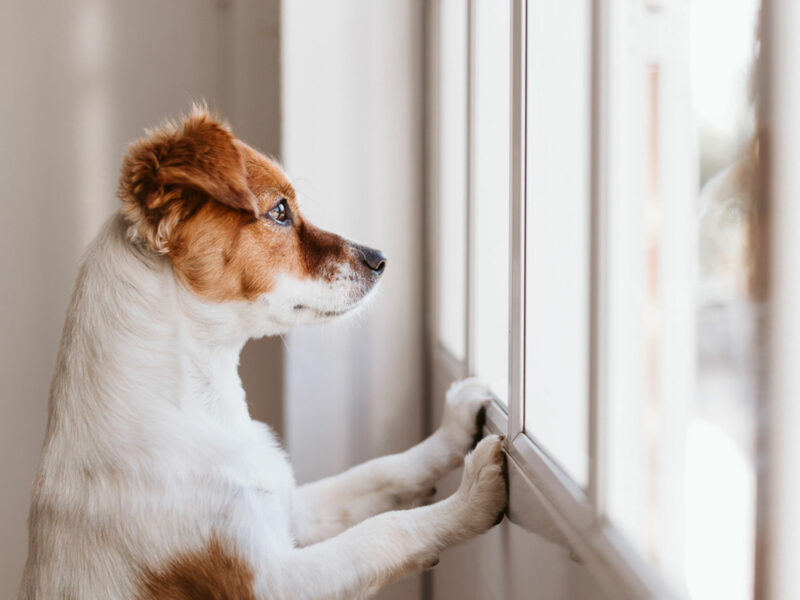You’ve likely been spending lots of time at home during the pandemic, and no doubt your dog has enjoyed this quality time with you. If like many, you’ve welcomed a new furry family member into your home during this period, they’ll be very used to having you around most of the time. This poses a challenge for our pets when they start spending more time alone. Some dogs may take these new changes to their routine fine. But for other pets, it could bring about separation anxiety, which can be very distressing for dogs and owners alike.
Separation anxiety is one of the most common yet most underdiagnosed behavioural problems in dogs. The clinical signs of excessive barking, howling, destruction, self-mutilation, urination, and defecation can significantly affect both dogs and owners. Luckily, veterinarians understand separation anxiety, and there are treatment options available to manage this condition and improve the quality of life for your special furry family member.
Separation anxiety is distress experienced on separation from you as the owner(s). Anxiety is the “anticipation of future danger or misfortune” – Dr K Seksel. Dogs are social animals, and it is normal for a puppy to become attached to their litter and then subsequently to the human family that becomes their home. Some dogs do not adjust to being without their owners and develop separation distress. Some dogs may become destructive or vocalise if under-stimulated and not provided with the appropriate physical exercise and mental stimulation. However, signs of separation anxiety become apparent when they are linked to the owner’s departures or absence, when they cannot gain access to them and when they cannot adjust to their absences over time. These dogs are anxious and are not “acting out” or trying to spite their owners; they are having a difficult time and need help.
Pay attention to your dog’s behaviour before you leave the house. Some possible signs to look for are:
- Signs of distress, especially when your dog sees cues that you are leaving like picking up keys, putting on shoes or applying make-up
- Following you around unusually
- Pacing
- Try desperately to go with you
- Reacting to noises unusually
- House soiling
- Panting and drooling
- Freezing
- Barking
- Scratching
- Other signs of distress
Some possible signs of separation anxiety while you’re away from your dog include coming home to:
- Digging in the garden
- Destructive behaviours around the house
- Trying to escape
- Reports from neighbours of repetitive barking, whining or howling
- House soiling
If you notice any of these signs of separation anxiety, please speak to your veterinarian. Depending on the case, they may refer you to a veterinarian with further qualifications in behaviour or a veterinary behaviour specialist.
Come prepared for your Vet consult with a thorough understanding of your dog’s history, routine, and any changes to their routine that could be causing the anxiety.



 Toxic Plants
Toxic Plants



